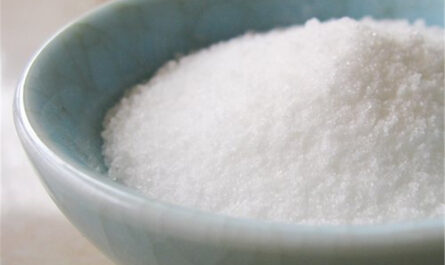Fluorspar, also known as calcium fluoride (CaF2), is a mineral that is essential for many industrial applications. While its name suggests that it may be related to the element of fluorine, fluorspar does not actually contain any fluorine in its mineral form. Rather, it is an important source mineral that is refined to produce hydrogen fluoride and other fluorine-based chemicals.
Physical Properties and Occurrence
Fluorspar occurs naturally as the mineral fluorite, of which there are three main varieties based on color: blue, green and colorless. Blue and green fluorspar tend to be more desirable for ornamental uses due to their aesthetic properties, while colorless types are preferred for industrial applications where purity is important.
Chemically, fluorspar has a simple formula of calcium fluoride (CaF2) and crystallizes in the isometric cubic crystal system. It has a Mohs hardness of 4 and a typical specific gravity of 3.18. Major global fluorspar deposits are found throughout parts of Mexico, China, South Africa, Mongolia and Canada. The United States was once a leading producer but has seen diminished mining activity in recent decades. Fluorspar commonly occurs alongside lead, zinc, silver and other base metal deposits in veins or as a gangue mineral in Mississippi Valley-Type deposits.
Industrial Uses of Fluorspar
Fluorochemical Production
Over 90% of Fluorspar production goes towards the manufacture of hydrofluoric acid (HF) and other fluorine-based industrial chemicals through flux-grade acid grade fluorspar. HF is a crucial input for a wide variety of chemical and metallurgical processes. It is used to produce fluoride chemicals such as sodium fluoride, aluminum fluoride and cryolite. These fluorides find many uses including metal treatment, plastic manufacturing, pharmaceuticals and more.
Aluminum Production
A significant amount of metallurgical or acid grade fluorspar is consumed in primary aluminum production. About 3-5% fluorspar is added to the cryolite (Na3AlF6) used in electrolytic cells to extract aluminum from alumina. Fluorspar lowers the melting point of cryolite and helps the cells run smoothly. Aluminum fluoride and hydrogen fluoride are also generated.
Steelmaking
Fluorspar is a useful flux that promotes the removal of slag and impurities from steel. Fluorine emitted from the fluorspar combines with oxygen to produce carbon monoxide and carbon dioxide gases, which carries slag and inclusions out of the molten steel. This leads to cleaner, higher quality steel. Fluorspar is used to some extent in electric arc furnaces and secondary steelmaking.
Ceramics and Glass
Metallurgical or acid grade fluorspar may be used as a flux in the production of ceramics, heat-resistant glass, phosphate fertilizers and other industrial minerals. In this role, it lowers melting temperatures and aids chemical reactions. Small amounts of calcium fluoride also go into toothpaste, glass polishing compounds and other applications.
Declining Supply
While global fluorspar reserves remain substantial, mining production has declined steadily over the past two decades due to depletion of high-grade ores and changes in steelmaking methods. The United States and Mexico once accounted for over half of world output but have seen their mining sectors contract severely since the 1980s. China has emerged as the dominant producer, followed by Mexico, Mongolia, South Africa and Russia. However, the majority of recent Chinese production expands consists of lower grade ore that must undergo costly processing.
Prices for fluorspar have risen considerably since 2000 due to reduced global supplies relative to growing demand from aluminum and fluorochemical sectors in Asia. Major consumers have becomes more reliant on imports. This dynamic is expected to continue pressuring fluorspar unless substantial new resources can be brought into production internationally. Recycling of hydrofluoric acid from aluminum and steelmaking also helps stretch limited supplies to some degree.




